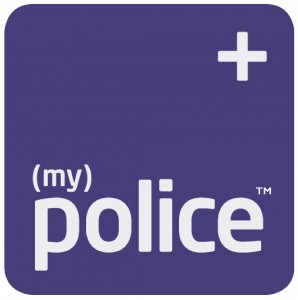WRITTEN ON October 22nd, 2008 BY Sir Bonar Neville-Kingdom GCMG KCVO AND STORED IN Uncategorized
Sir Bonar writes:
I was disturbed to observe in a recent meeting that a female colleague from FCO appeared to be sweating. She was also carrying a helmet. It transpired she had come to our meeting by bicycle. Really, these devices are everywhere now. That very morning a cyclist had nearly damaged the paint on my official car by lurking in a blind spot when we suddenly needed to turn left.
As it happened I was asked earlier this year, as part of my security liaison work, to lead a meeting reviewing the procedures for arriving by bicycle at the Depatment of Health’s Richmond House headquarters.
Bicycling, or cycling, we established, refers to pedal-driven human-powered vehicles, generally with two wheels attached to a frame. It is government policy that cycling is an acceptable way for junior civil servants to get around, with some health benefits. However bicycles can also be used to conceal and transport improvised explosive devices, as demonstrated by the IRA in 1979 and more recently in Singapore and Pakistan. Indeed this risk is described by Graham Green in his novel The Quiet American.
The whole issue of bicycles and Goverment buildings therefore needs to be approached with some caution. We agreed it was quite appropriate that DoH should draft an acceptable cycling security policy applicable for Richmond House.
With our “Customer Insight” hats on, we mapped out the entire customer journey. What we came up with was this.
1. The cyclist should notify Richmond House security in advance in writing of their intention to travel to Richmond House on a bicycle.
2. This intention should be reconfirmed by telephone on the day of travel, along with any revision to the estimated time of arrival (ETA).
3. On arrival, the cyclist should first present themselves to the armed police in Derby Gate.
4. The police will redirect them to the uniformed DoH duty liaison officer (DDLO).
5. The DDLO can then redirect the cyclist to the Richmond House reception.
(Note that bicycles are not permitted inside the DoH reception, and that any bicycles chained up outside reception may be removed without warning. Cyclists will therefore need to make their own arrangements for storage in this interim period, preferably outside the one-kilometre SOCPA exclusion zone. It would be necessary to put up a notice to this effect.)
Once the cyclist is inside Richmond House reception the procedure is as follows:
7. The cyclist presents themselves to reception staff, giving their name, proof of identity, and the purpose of their meeting. Reception staff greet them courteously, in a natural manner.
8. Any bags they are carrying will be searched by the duty security staff.
9. The cyclist must sign that the search has been properly carried out, and a disclaimer of any liability.
10. The cyclist is issued a badge and a bicycle parking permit.
11. The cyclist may then retrieve their bicycle and present themselves, with the bicycle, pass and bicycle parking permit to the armed police in Derby Gate.
12. The police will alert the DDLO who can then arrange access to the underground car park, where the bicycle can be parked for a short period.
13. The cyclist should wait in the underground car park until such a time as they are collected by their host. They may find that having a mobile phone is useful for this purpose, since there is clearly no reception desk in the underground car park.
14. Upon completion of their meeting they should return their pass to their host, who will give it back to reception.
15. The cyclist can then present themselves at Derby Gate to the armed police who will again summon the DDLO.
16. They will then be informed they are required to show their pass.
17. The pass can be recovered if the cyclist re-presents themselves to Richmond House reception and explains the circumstances.
18. If the original pass cannot be retrieved then reception is authorised to issue a new pass for this purpose.
19. The cyclist is then be permitted to re-enter the underground area and recover their bicycle.
20. The DDLO can then raise the security barrier and allow the cyclist to leave.
21. The cyclist should then again secure the bicycle, preferably outside the 1km Socpa exclusion zone, and return their pass to reception. Reception staff should at this point wish them a nice day or some similar sentiment, in a natural-sounding and friendly manner.
22. The cyclist should then ring security to confirm they have left the premises, and confirm that fact in writing as soon as possible.
It was curiously exciting and we were tremendously pleased with the results of our “Customer Journey”. These things are more complex than one realises. I might add that it took several senior people a great deal of time to map this all out. I do not think the taxpayer would wish us to spend any further time on the matter, which is frankly not top on the Department’s list of priorities. We’ve therefore instructed staff not to engage in any further consultation or indeed to make any further suggestions themselves about this, now they have a clear procedure to follow.
The benefits are already clearly seen. Users are very enthusiastic about the scheme, and there has been not one terrorist incident involving bicycles at Richmond House in the last nine months since we introduced the new policy. Apart from occasional episodes of sweatiness among female colleagues it has proven a complete success.
While on the subject, it should be stressed that bicycles may not under any circumstances be used for the transportation of official documents, lap-top computers or mobile phones because of the risk of data loss. Cyclists should take extreme care not to impede the progress of cars in Whitehall, many of which are on official business.
Comments are closed.











